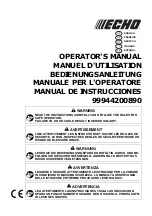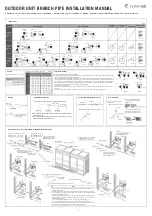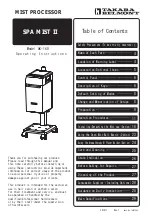
5.
MAINTENANCE, ADJUSTMENTS AND CALIBRATION
Page 189
© 1998-2008 DH Instruments, a Fluke Company
The sleeve retaining screws (5) MUST be reinstalled
before pressure is applied to the piston-cylinder module.
Damage to equipment and injury to personnel may result
from pressurizing the piston-cylinder module without the
sleeve retaining screws installed.
The orientation of the piston on the cylinder is
important. The end of the cylinder that is marked with the
serial number should go into the sleeve and/or main module
housing first. The piston enters the end of the cylinder that
is marked with the serial number. Installing the cylinder with
the wrong orientation may lead to out of tolerance
measurements.
5.3.2.3
DISASSEMBLY AND REASSEMBLY OF OIL
OPERATED, OIL LUBRICATED
PISTON-CYLINDER MODULES (PC-7300)
The PG7000 piston-cylinder module design affords maximum protection to
the piston-cylinder element ensuring that it is protected during routine piston-
cylinder handling. Cleaning the piston-cylinder requires disassembly of the module
and exposure of the piston-cylinder to possible damage. These risks include damage
to the critical working surfaces and chipping or breaking, especially for small
diameter pistons, in particular the PC-7300 5 MPa/kg. Only qualified personnel
should undertake piston-cylinder disassembly, cleaning and reassembly. The
instructions and recommendations contained in this manual should be followed
carefully throughout the operation.
NEVER touch the lapped surfaces (polished appearance) of the piston or
cylinder with your bare hands. Body oils and acids can permanently etch
the surfaces.
In normal use, always maintain PG7302 oil piston-cylinders vertical with the O-
ring assembly down. Do not invert the assembly and allow oil to run up into the
piston head into the adjustment mass and cap. Oil contamination of the piston
head and cap changes the mass of the piston assembly and could lead to out of
tolerance pressure definitions at low mass loads. If oil contaminates the
adjustment mass and cap, disassemble the module and clean it (see Section 5.3).
















































